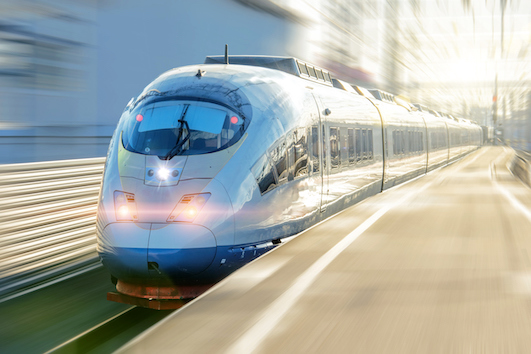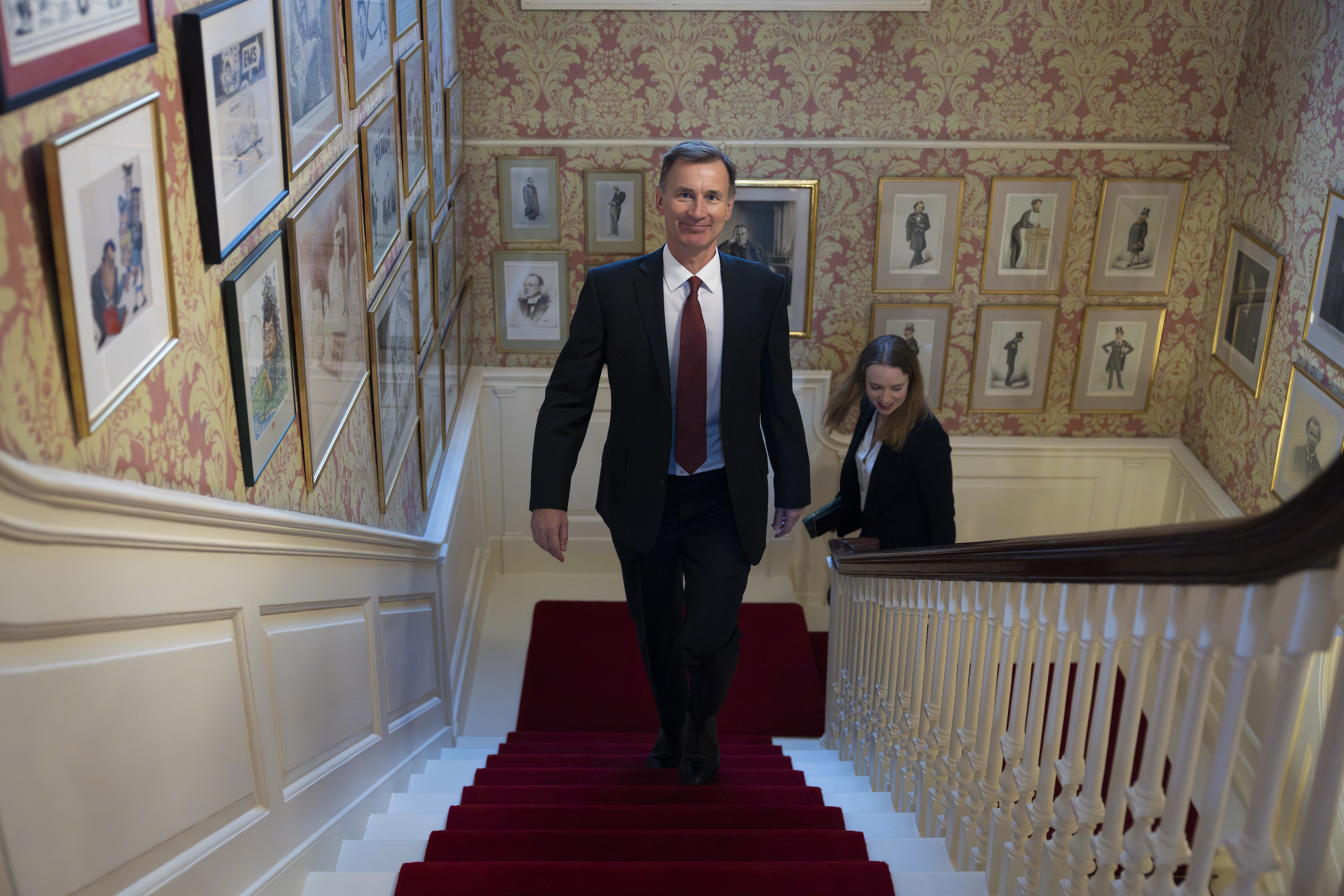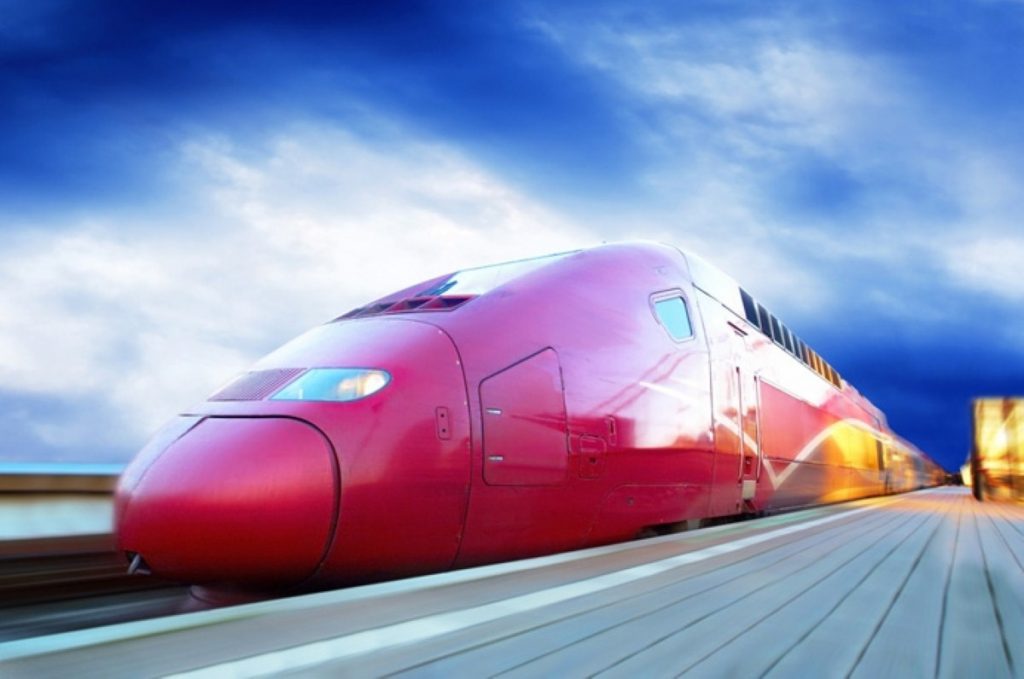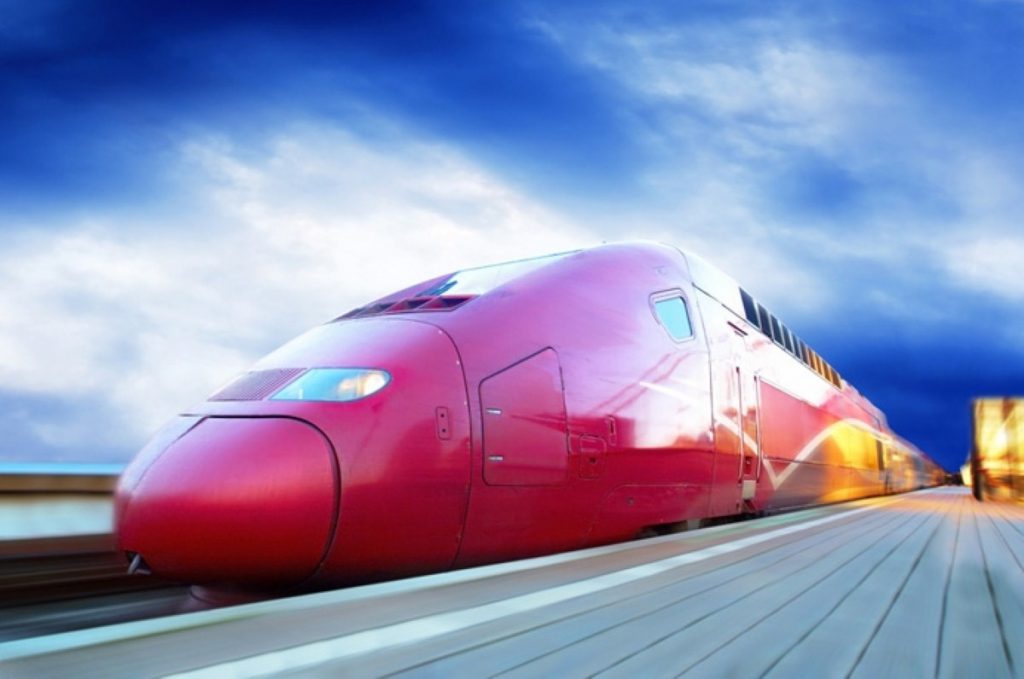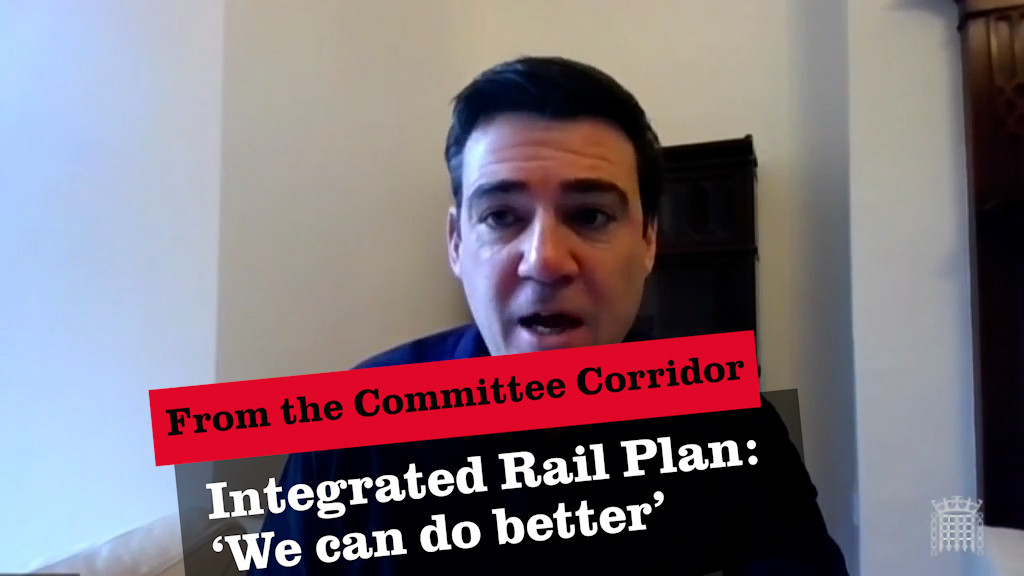HS2 Cost
In 2012, the UK Government announced plans for a new national high-speed rail network known as High Speed 2 (HS2).
In 2023 the estimated total cost of completing HS2 had ballooned to over £100 billion.
This £100 billion investment project is being spent over a number of years. However to put the figures in context, the total cost of HS2 now equates to approximately two thirds of the UK’s annual NHS budget.
When the concept of HS2 was first muted by the Labour government prior to the 2010 General Election, estimates for the cost of HS2 ranged upwards of £20bn.


By January 2012, when the broad route of the proposed scheme had first been put in place, the estimated cost of the project was estimated to be £32.6bn.
These estimates were subsequently increased to £46 billion in 2013 and £55 billion by 2015.
A 2019 report by HS2’s chairman, Allan Cook, suggested that the final costs would be between £72.1 and £78.4bn because ground conditions were “more challenging than predicted” and early estimates were “overly optimistic”.
In 2022/203, an increase in inflationary pressures fueled more budget overruns on the HS2 project, taking the estimated cost to over £100 billion.
Lord Berkeley, the deputy chair of the independent Oakervee review, has reported that the final costs of HS2 will rise to £110bn. This figure is based on the assumption that the 2019 review underestimates the cost of buying property, maintenance, station redevelopment and contingencies.
The National Audit Office has criticised the government and HS2 Ltd for not ‘adequately managing the risks to taxpayer money’ in relation to HS2. In January 2019, the former Chair of HS2 Ltd, Terry Morgan, admitted to Parliament that “nobody knows” how much the HS project will cost.
Initial cost estimates were said to have dramatically under estimated the costs of buying up properties to make way for the line, the cost of diverting gas and power lines, and issues involved in dealing with asbestos and archaeological remains.
Costs have also risen as the government has committed to increase the length of tunnelling and to erect further noise barriers in the face of protests from local residents.
The HS2 route
The HS2 route is being developed in a number of phases.
The first phase of HS2 will see high speed trains run between London Euston, Old Oak Common in west London, Birmingham interchange and Birmingham Curzon Street. Full services running from London Euston are currently set to start between 2031 and 2036.
The second phase will then allow high speed trains to head further northwest to both Manchester Airport and Manchester Piccadilly. These trains will also be able to travel on existing lines to Wigan, Crewe and Stafford.
There had previously been plans for an eastern extension to HS2. On this eastern extension trains were set to travel northeast from Birmingham towards an East Midlands Hub at Toton, and then onto Leeds. In the face of mounting costs, the HS2 eastern leg extension was scrapped in 2021. This extension was instead replaced with plans for local improvements, including a high-speed line from Birmingham to East Midlands Parkway.
There will be two types of trains running on the proposed high speed lines: high speed only trains which run only on high-speed tracks, and high-speed trains designed to run on both high-speed tracks and on the existing network.
The track will be designed to cope with trains running at initial speeds of up to 225 mph, with the potential to increase to 250 mph. Currently the fastest speed possible on the existing network is 125 mph. The new trains will be more spacious than the present ones. The new lines will be able to accommodate the wider and taller trains used elsewhere in Europe.
HS2 will involve the construction of more than 300 bridges and 70 viaducts for the London-West Midlands section of the line alone. The scheme involves the creation of 6 new stations including at Birmingham’s Curzon Street and extensions for London Euston and Manchester Piccadilly.
Described as “the most significant transport infrastructure project since the building of the motorways”, the high speed line will connect London with cities in the Midlands, the North and Scotland. The network is set to serve over 25 stations, providing infrastructural links between some 30 million people.
The case for HS2
Over the years, the construction of HS2 has been justified through a combination of social, economic, and environmental arguments.
The Government remains convinced that HS2 is the most effective way to provide much-needed additional rail capacity across the country, while supporting economic growth in the regions, creating jobs and helping to reduce carbon emissions from the transport sector.
The case for HS2 has been heavily framed as an appeal to communities in the Midlands and the North. As part of the government’s levelling up agenda, HS2 has been marketed as creating a ‘more united country’, in which every region of the UK is better able to reach its economic potential.
By improving connections and reducing journey times to traditionally ‘cut-off’ cities, the government envisages a surge in economic productivity outside of London. A government-commissioned report by the accountants KPMG predicted that the West Midlands will gain the most from the connections.
What is more, the construction of HS2 alone directly supports a considerable number of jobs. Building Phase One alone will create 22,000 jobs, including many apprenticeships. Some 2,000 business have already received work relating to HS2. 60% of these are small and medium-sized enterprises and over 90% are based in the UK.
The development of HS2 is also said to provide more viable low-carbon transport options than currently exists in the UK. The new high-speed trains are expected to emit 17 times less carbon than a domestic flight of the same distance and 7 times less carbon than the equivalent car journey. The new line is thus considered a part of the UK government’s plans to tackle climate change.
HS2 is further seen as a way of tackling overcrowding on a number of Britain’s major railway routes.
Under current capacity constraints, the West Coast Main Line is forecast to become overloaded south of Rugby by 2025. By removing high-speed trains from existing tracks and re-assigning them to HS2 rails, the Government foresees faster and more efficient travel between key towns and cities. This would likewise free up space on smaller commuter trains, improving rail travel within local communities.
From an international perspective, advocates of HS2 point to how UK lags behind most other leading industrialised countries in terms of its railway infrastructure. Japan launched its first high-speed ‘bullet train’ in 1964, and France, Germany, Italy, the Netherlands, Belgium, Spain, China, Taiwan, and Korea had all constructed, or were in the process of constructing, high-speed systems.
Opposition to HS2
The proposal to build the new HS2 rail line has though attracted considerable criticism and opposition from a number of different angles.
Opposition to HS2 is regularly cited in relation to how the new line will cut through some of the most beautiful countryside and vibrant villages in England. The Conservative MP for Stone in Staffordshire, Sir Bill Cash argues that the HS2 project has blighted his constituency, from top to bottom, ‘wreaking havoc on the countryside and the value of properties and damaging the environment’. The impact of HS2 was said to have played a large role in the Conservative defeat in the 2021 Chesham and Amersham by-election.
Other critics have focussed on the astronomical cost of the project. Some rail commentators have argued that rail services could be improved far more effectively in other ways using the large investment figures being dedicated to this project. The Campaign Group, HS2 Action Alliance has said that there are ‘better alternatives to improving our railways’.
In light of the significant costs put on the pubic finances by the 2020-21 Covid 19 pandemic, cancelling HS2 has been seen by many groups as a way of rebalancing priorities. Critics have also pointed out how the pandemic highlighted the possibilities and value of teleworking, undermining those arguments suggesting fast speed rail is vital in future economic growth.
There has also been criticism of the way in which the new high speed line is being developed and constructed. A wide range of campaign groups, from the Campaign to Protect Rural England, Friends of the Earth, Greenpeace, the RSPB, the Ramblers Association, the Wildlife Trust, and the Woodland Trust are signatories to the Right Lines Charter, launched in 2011.
The Charter calls for new approaches to planning, appraisal, public engagement and design. Particular concerns have been raised around the carbon emissions involved in the project’s construction, and for decision-making to recognise the value of the natural and historic environment.
HS2: A history
The conception of HS2 – 1997 to 2007
From 1997 and 2007, rail usage in the UK saw a dramatic increase by both passengers and by freight, putting considerable strain on the national rail network.
The 2007 White Paper ‘Delivering a Sustainable Railway’ concluded that, while the current rail network would be able to cope this rate of growth for at least two decades, future planning for increased rail capacity should focus on new line options. By 2008, a number of significant rail improvement projects were already underway, notably the Channel Tunnel Rail Link (High Speed 1) , the West Coast Main Line upgrade, the Thameslink Programme and Crossrail.
Noting the lengthy construction times of major infrastructure projects, the then Labour government asked Network Rail to begin looking at future rail options, including new routes.
Network Rail’s initial report suggested there was a strong case for a new rail line from London to the West Midlands. This would allow vastly improved services to be run on new and existing lines to Manchester, Liverpool, Glasgow, as well as other key destinations in the north of England and Scotland. In the South, it was suggested that any line should connect to a new Heathrow International interchange station on the Great Western Main Line. This would provide a direct 4-way interchange between the airport, the new north-south line, existing Great Western rail services and Crossrail into central London.
Firming up HS2 Proposals – 2009 – 2012
The Government announced in January 2009 that it was creating a new company, High Speed Two (HS2 Ltd), to consider the case for new high-speed services from London to Scotland and to develop proposals for a high-speed rail line between London and the West Midlands.
HS2 Ltd reported back at the end of December 2009 and the then Labour Transport Secretary, Andrew Adonis, published the Government’s response in a 2010 Command Paper, ‘High Speed Rail’. This set out the Government’s proposed strategy for high-speed rail and its preferred route options.
The Paper also emphasised that no firm decision could be made on either the preferred route, or the proposed strategy until a formal public consultation had taken place, in which all those affected by, or interested in the proposals, could participate.
At the same time, a consultation was launched on an Exceptional Hardship Scheme (EHS) to protect the interests of residential owner-occupiers of properties which may be affected by the preferred route option for a new line between London and the West Midlands.
Following the 2010 General Election, the Coalition government indicated its intention to continue with the high-speed rail project, stating it believed that a national high-speed rail network “offers a once-in-a-generation opportunity to transform the way we travel in Britain.”
In February 2011, the Government launched a national consultation – ‘High Speed Rail; Investing in Britain’s Future’ – which set out the Government’s proposed strategy for a national high-speed rail network for Britain and the route for an initial line between London and the West Midlands.
The consultation posed seven questions, covering the Government’s overall strategy, the proposed route, the environmental appraisal of the line, and options for supporting property owners affected by the proposals. This was reported to be one of the largest consultations undertaken by the Department for Transport, attracting almost 55,000 responses.
HS2 confirmed – 2012-2013
In January 2012, the Government announced its intention to go ahead with the proposed HS2 Y network. HS2 Ltd stated that it intended to deposit a hybrid Bill in Parliament which would provide the powers to construct the new line.
The company noted that the Bill would also provide an opportunity for those affected by the proposals to petition Parliament and that a Select Committee could recommend changes to the project.
A judicial review was called into the HS2 decision in April 2012. One of the review’s ten grounds for complaint was upheld by Lord Justice Ouseley; namely, that the government had acted unlawfully when consulting on compensation for homeowners affected by the route.
In November 2013, MPs approved funding for the network and the High-speed Rail Bill was introduced in parliament.
Growing doubts over HS2 – 2015-20
Despite the initial approval of the HS2 project, there remained substantial doubts over the merits of the project. Amidst construction challenges, there were continuing questions over whether the project would go ahead.
Following freedom of information requests in 2015, a Department for Transport viability report into HS2 was shown to suggest that the project was becoming unaffordable. Some estimates suggested that the cost of the project was likely to triple from the initial £37.5 Billion to well in excess of £100 billion.
In March 2019, a report from the New Economics Foundation suggested that HS2 will deliver disproportionate benefits to London, perpetuating further existing regional inequality.
By August 2019, £7.4 billion worth of land had been bought on the route, but much of the network’s progress remained on paper.
Recommitting to HS2 – 2020-
Following Boris Johnson’s appointment as Prime Minister, a new government review was launched to assess whether or not the scheme was still viable.
The new Transport Secretary Grant Shapps announced delays of up to 7 years to the proposed scheme. He also noted that budget costs had risen by £32 billion.
Following significant uncertainty, the project’s go-ahead was though confirmed by Prime Minister Boris Johnson in February 2020.
The construction of the HS2 project is taking place across a number of phases. Phase 1 will link London with the West Midlands using 140 miles of high-speed track. The network will include connections to four high-speed rail stations, two in central London (Euston) and West London (Old Oak Common), and two in Birmingham Airport (Birmingham Interchange), and central Birmingham (Curzon Street).
Phase 2 will then extend services between Fradley in the West Midlands and Crewe in Cheshire. The line will then form a Y shape, divided into an eastern and western leg. The eastern leg will connect to high-speed lines in the West Midlands and continue through to Leeds. The western leg will connect to Crewe and culminate at Manchester. Services will also move onto the existing network, reducing journey times to Glasgow, Liverpool, Preston and Wigan. Phase 2 will incorporate further stations in Manchester, the East Midlands, South Yorkshire, Leeds, and Heathrow.
- In May 2021, the Queen’s Speech detailed plans by the government to bring forward the High Speed Rail (Crewe-Manchester) Bill before Parliament. This will contain the powers to build and operate the next stage of the HS2 line.
Throughout its construction process, HS2 has committed to delivering “miles of ecological and landscape investments” alongside the new railway. As of 2021, 60 new wildlife habits had been created along the route, and 35 000 trees planted.
In November 2021, a decision was made to scrap the eastern leg of the HS2 extension beyond Birmingham. Phase 2 of HS2 had previously contained details of plans for the fast rail line to travel between both Birmingham and Manchester, and Manchester and Leeds. However the Leeds leg of the extension was set to be replaced by a new rail plan that would be both cheaper and come into operation sooner. The change was though expected to leave rail journey between Birmingham and Leeds taking an addition 20 minutes compared to the original HS2 plans.
In the May 2022 Queen’s Speech, plans were laid down for the High-speed rail bill (Crewe to Manchester) which sets out in law the building of the next phase of the HS2 rail link, this time covering fast rail between Crewe and Manchester.
In the face of further mounting costs, in March 2023 the transport secretary Mark Harper announced that there would be a 2 year delay in plans to extend the north west section of HS2 from Birmingham to Crewe, and then from Crewe to Manchester.
Quotes
“Delivering better, faster and more reliable transport connections is the way to close the opportunity gap across this country. But it is not and never will be an ‘either/or’ between big projects and local services. Dramatic improvements to local transport and the decision to proceed with HS2 will shift this country’s centre of gravity away from the capital and transform connectivity between our towns and cities. I am drawing a clear line under the mismanagement of the past – HS2 must be delivered more efficiently and cost-effectively so that communities feel its benefits more quickly, particularly those in the North.” – Prime Minister Boris Johnson, 2020
“HS2 will be the spine of the country’s transport network, boosting capacity and connectivity while also rebalancing opportunity fairly across our towns and cities.” – HS2 Minister Andrew Stephenson, 2020
“HS2 must be developed with more sensitivity to local communities and the environment, particularly regarding the impact it will have on woodlands.” – Jeremy Corbyn, former Leader of the Labour Party, 2020
“There are many things we could do with this money better, than for rich businessmen to get back home from Manchester and have one more gin and tonic.” – Nigel Farage, Leader of the Brexit Party, 2019
Statistics
Over 7,000 jobs are already supported by HS2. At the peak of construction this will rise to 30,000 jobs, 70% of these outside of London (Source- HS2, 2019)
The total HS2 network is predicted to be 330 miles; the full network would concrete an area the size of Manchester. (Rail.co.uk, 2017)
It is estimated that 4.5 million air trips and 9 million road trips a year will relocate onto HS2 rail routes, reducing national carbon emissions. However, 27% of predicted passengers will only be travelling because HS2 exists, increasing the total amount of superfluous trips being made. (Rail.co.uk, 2017)



